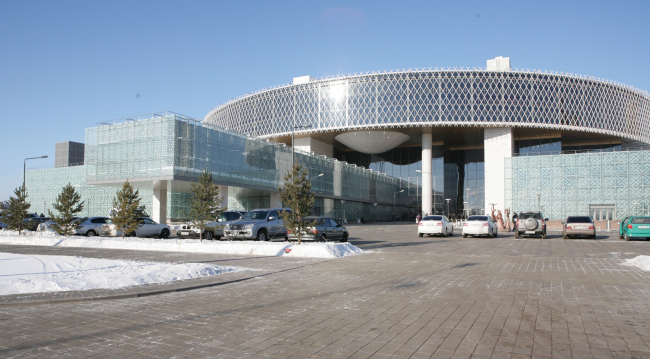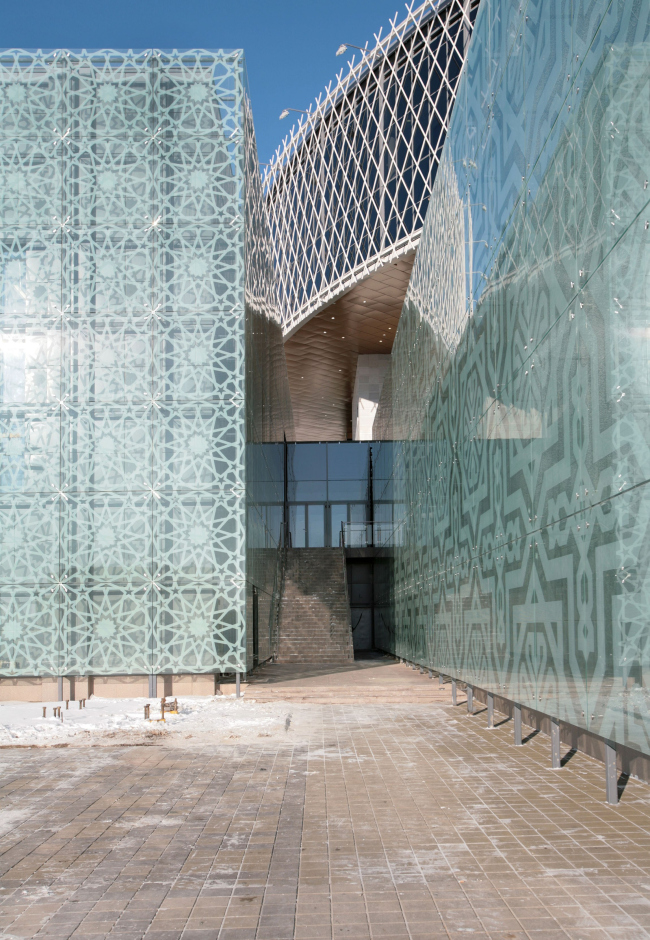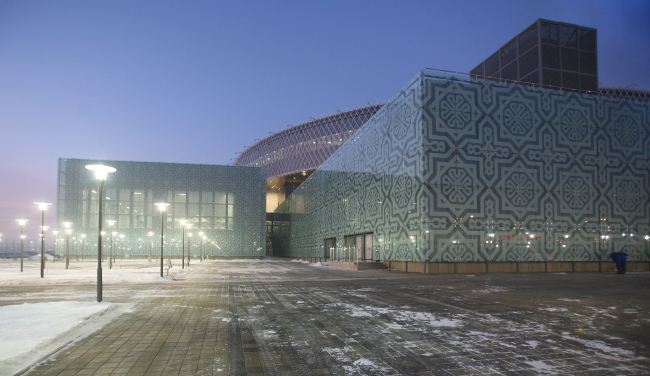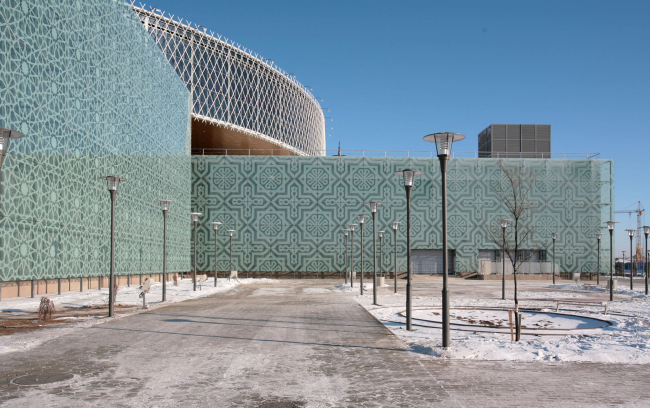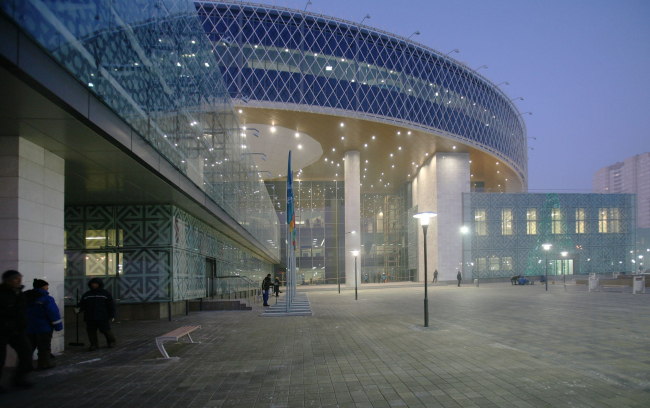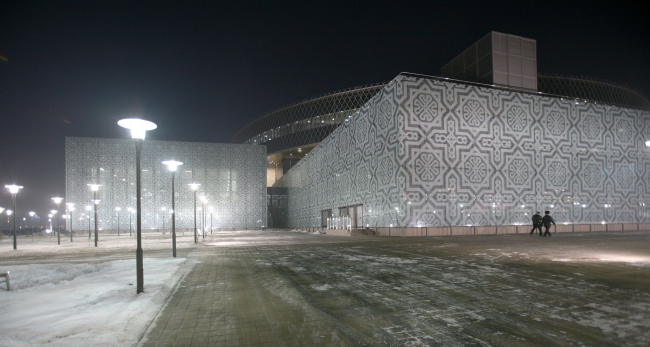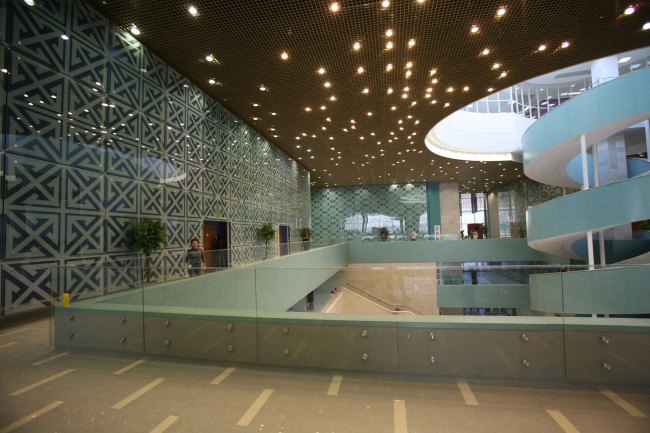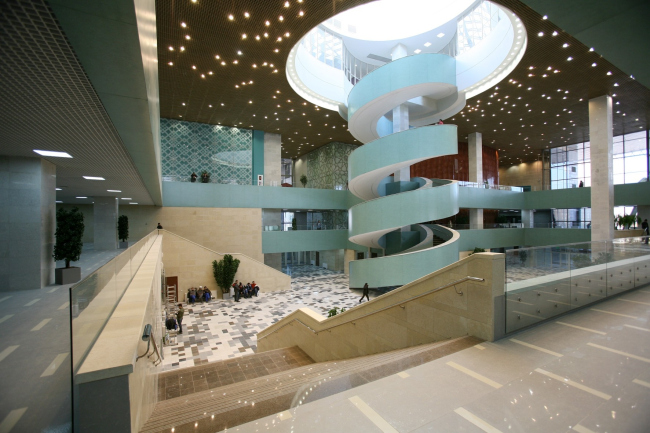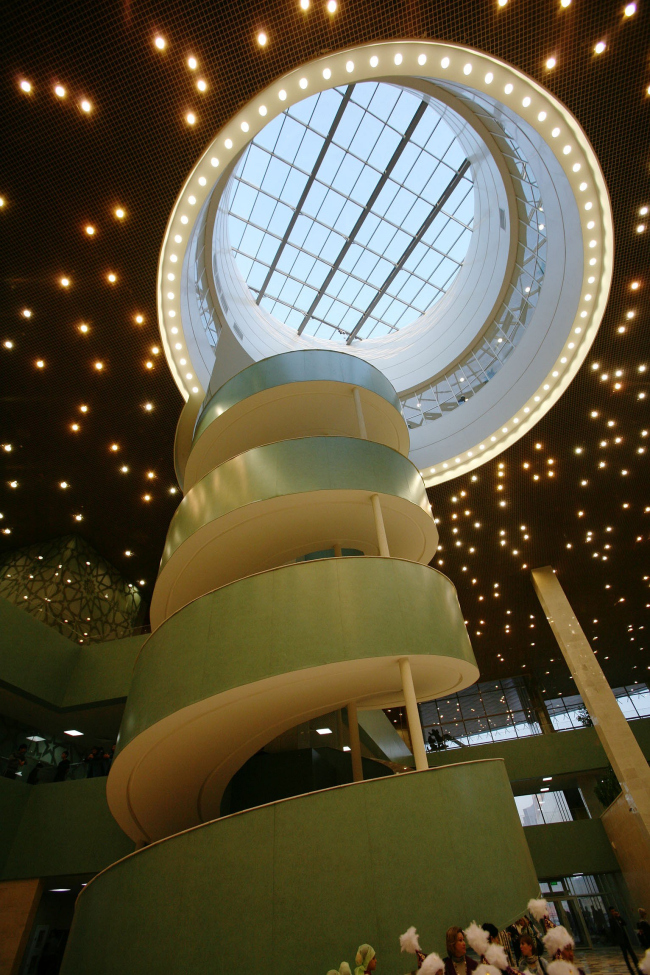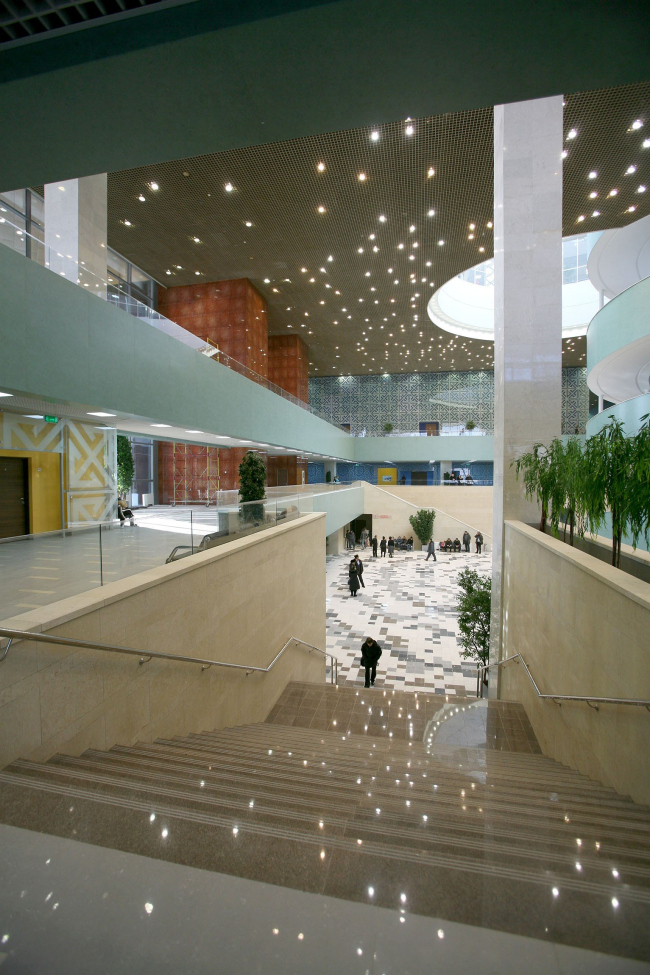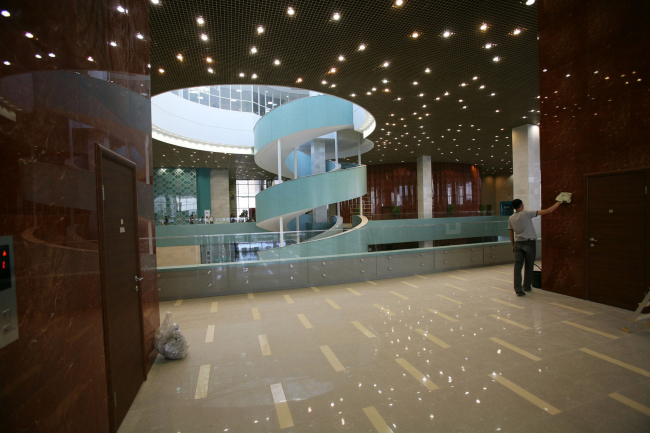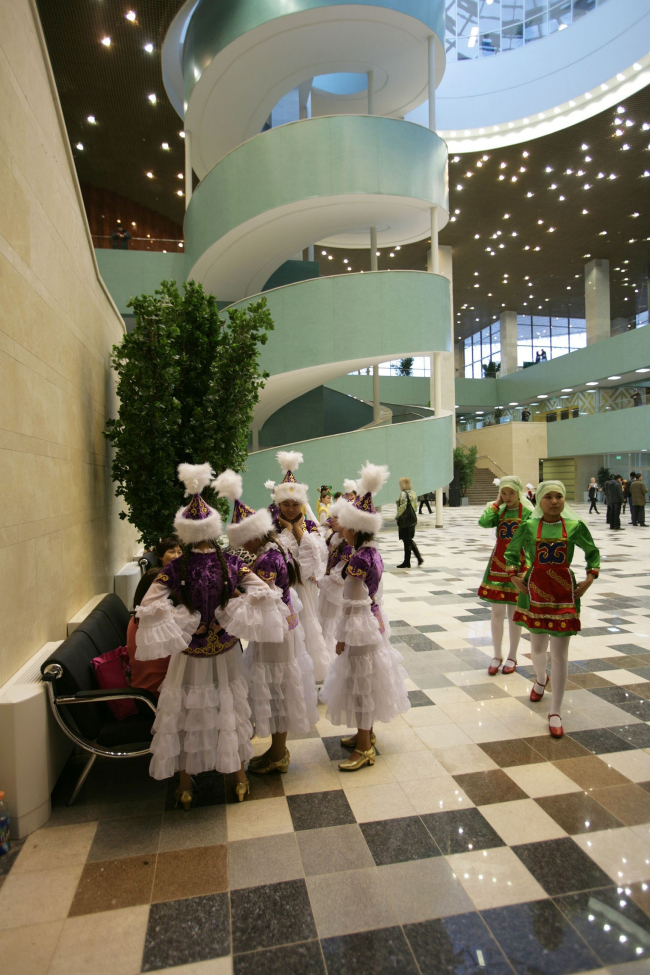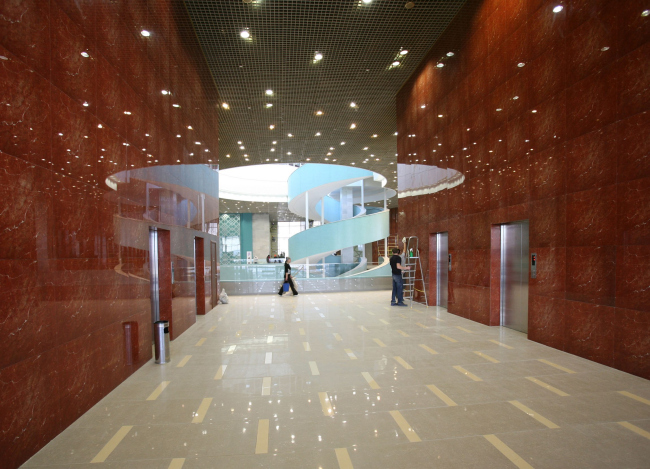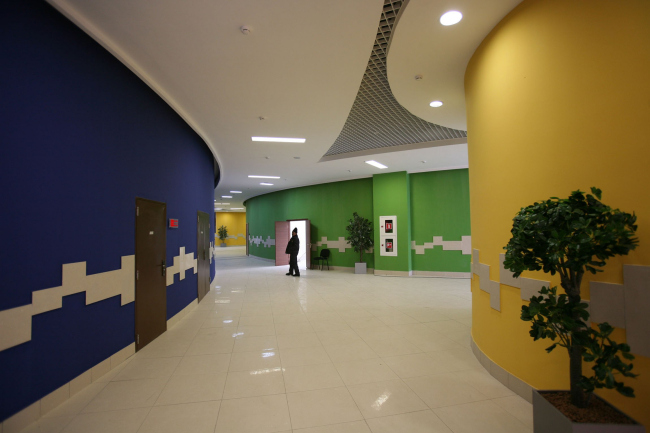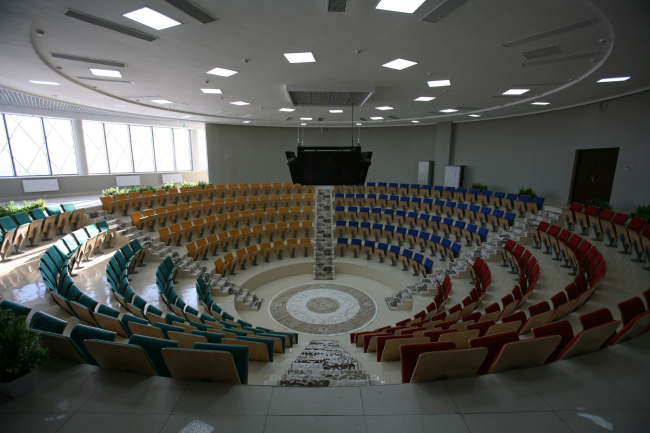|
Published on Archi.ru (https://archi.ru) |
|
| 26.12.2011 | |
|
Blitz-Building or How to Build a Palace in Six Months |
|
|
Anna Martovitskaya |
|
| Architect: | |
| Nikita Yavein | |
| Studio: | |
| Company: | |
|
The city of Astana (Kazakhstan) saw the completion of the construction of the School Students Activity Center build by the project of “Studio 44”. On the 8th of December, on the eve of Kazakhstan’s Independence Day, the inauguration ceremony took place. A little more than a year ago, “Studio 44” won the international competitive bid for the best schematic design of the new Students Activity Center (usually called “Student Activity Palace” in CIS Countries – translator’s note). Then several months were spent on the modification of the project and detailed design, after which the project was submitted for Astana municipality’s approval, and, finally, in the spring of 2011, the builders entered the construction site. The center, whose area amounts to more than 40 000 square meters, was completely built in 6 months’ time. Of course, this “ballistic” execution period brings up the question both about the quality of the construction work, and about comparing the result with the original architectural plan. The leader of “Studio 44” Nikita Yavein and chief architect of the project Nikolay Smolin, who were present at the inauguration, shared with Archi.ru their impressions about the opening of the Center. Nikita Yavein: When we arrived to the site, my first impression was very strong. All the façades of the center are executed in glass, and they look really striking, especially on a sunny day, when the sunbeams refract many times through the glass surfaces of the façades, and also in the nighttime, when the building is backlit from the inside and from the outside. Nikolay Smolin: The composition and the functional properties of the building fully answer the original idea. The composition of the center is executed to a letter: Student Activity Center consists of several rectangular volumes of different sizes that are covered with one disk, in which various clubs and auditoriums are placed. The main changes that the project underwent during the construction were made in respect of the building materials, which is quite predictable. The Center had a very tight budget that neither us, nor the contractors could exceed – this is why many of the planned materials were substituted by their less expensive analogues. Some changes were made because of the very tight construction schedule. In particular, according to the original plan, the façades of the rectangular volumes were supposed to be built of architectural concrete. During the construction phase, however, it became clear that it would have been impossible to execute such façades quickly, and this is why the concrete was substituted by glass, later ornamented. We took special care to make sure that from our materials we were getting the necessary combination of transparency and legibility of the patterns. Prior to that, we made a few experimental samples, and we believe we got an adequate result. We chose glass that was tinted light green, and put white ornament upon it – all this put together serves to create the necessary feel of lightness and delicacy. NoneNoneNoneNoneNoneNoneNoneNoneNoneNoneNoneNoneNoneNoneNone |
|
